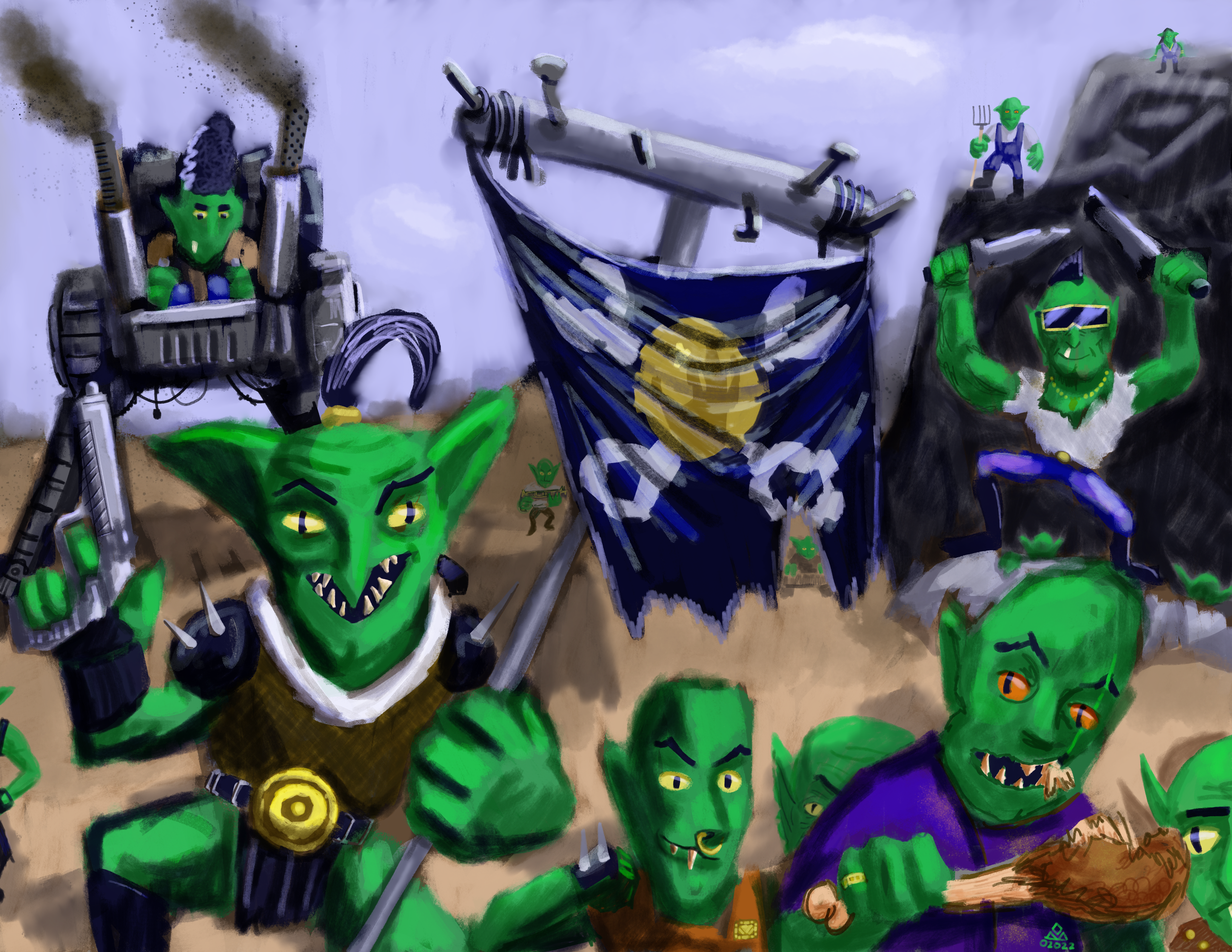History
The Yatagarasu ( 八咫烏 ,"the Star Crows", or just "the Yata" for short ) was founded during the height of the Great Reckoning, around YE 100, early in Era-2. It was named after the three-legged crow. As the Planetary League fell, and the economy of much of the galaxy slid from abundance to scarcity, various groups stepped in to fill the demand for goods and services. Since the Holy Empire of Man was both uninterested and often incapable of providing for the material needs of most of its subjects, the Yatagarasu formed as a loose coalition of scavengers, salvage operators, black-marketeers, and various other outsiders and outcasts. There is some historical evidence that the Tardigrades had a hand in founding the organization, and as time went on their involvement only became more apparent. Tardigrades could typically be found among the upper echelons of most Star Crow clans, often serving as advisors and enforcers for clan leaders. Clan Tardigrade was even founded on the preexisting organizational structure of the Tardigrades.
The Yatagarasu was founded mainly by scavengers and salvage operators, and since war was the single most wasteful activity during Era-2, wherever the imperial war machine went, the Yatagarasu would follow. In addition to salvage operations, after battles, the Yatagarasu would often offer assistance to survivors, and many a war-orphan joined their ranks. For the most part, the Holy Empire of Man tolerated the Yatagarasu's presence, as they tended to clean up the empire's messes. When things went badly for the empire; however, the Yatagarasu would often get blamed due to their associations with the black market, rebels, outcasts, and criminals.
Over time, organized crime and mercenaries joined the ranks of the Yatagarasu, helping to create the clan system and the New Ducat, a currency that came to be widely accepted. As the Yatagarasu prospered, a network of supply chains and retail outlets developed as well. The retail operations were usually pawn shops or second-hand stores selling refurbished items from salvage and scavenging activities. The Yatagarasu even possessed a number of permanent space colonies, and occasionally claimed planets with low strategic or economic value (less chance of retaliation from the major powers).
During the War of Galactic Unification, the Yatagarasu frequently aided the nascent Galactic Republic in many ways with logistics, personnel, and even ships. After the War, the Yatagarasu formally became part of the Galactic Republic.
Code of Honor
Early on, the Yatagarasu developed an informal code of honor that was upheld as a quasi-legal system. Most of the clans were based around large ships or space habitats, so the captains of those ships were the primary enforcers of the code, as well as the leaders of the clans. Even if a violation of the code took place away from the ship, if the captain found out, usually some punishment would result. The Star Crows took their honor quite seriously, as it was often their primary possession in a time of scarce resources.
The code of honor was cobbled together from odd bits of law, codes from various criminal organizations, and the customs of a number of different cultures. No two clans had quite the same code, but some things were universal. Among the rules all the clans respected were the laws of shipboard combat originally instituted by the Planetary League. The Planetary League legal system served as the base for much of the Yatagarasu code.
Conflict between the clans was not uncommon, often centering on territory or resources. Since they included a substantial criminal element, this often resulted in open combat between clans. Even so, battle between clans almost always conformed to the code of honor. Frequently, this would result in a duel of honor between rivals (often resolved by combat to the death). More often than not, the weapons for such a duel were battleoids. If one of these conflicts became too large or damaging, the clan leaders most closely affected by the conflict would call a conference to resolve the dispute.
The Yatagarasu, generally, was open to all species, cultures, and religions, making it an important refuge for a number of groups oppressed by the Holy Empire of Man. Not all clans were accepting of all comers. Often, local cultures or religions would hold sway with the majority of a clan’s leadership, informing the selection of new members.
Since the authorities frequently cracked down on them, the Yatagarasu used a number of passwords, secret handshakes and other signs to identify one another. Smuggling, spying, and secrecy were common vocations among the ranks of the Star Crows.
Economy
During the War of the Empires, the Yata started minting its own currency. The New Ducat was typically worth about 10 imperial credits, and played an important role in the galaxy's informal economy.
The Yatagarasu operated a large number of businesses of various types, although their associations were typically not publicly advertised. They were also involved with smuggling, the black market and the informal economy.
Clans
There were two tiers of Clans in the Yatagarasu, inner clans and outer clans. The leaders of the inner clans formed an informal leadership council that acted as a governing body.
The clans were large organizations that spread out over extensive territories. On the local level, the clan centered around a Honcho, a council of respected members who led the local groups.
The Eight Inner Clans:
1) Clan Crow (the founding clan)
2) Clan Rat (often seen as the brains of the Yatagarasu)
























